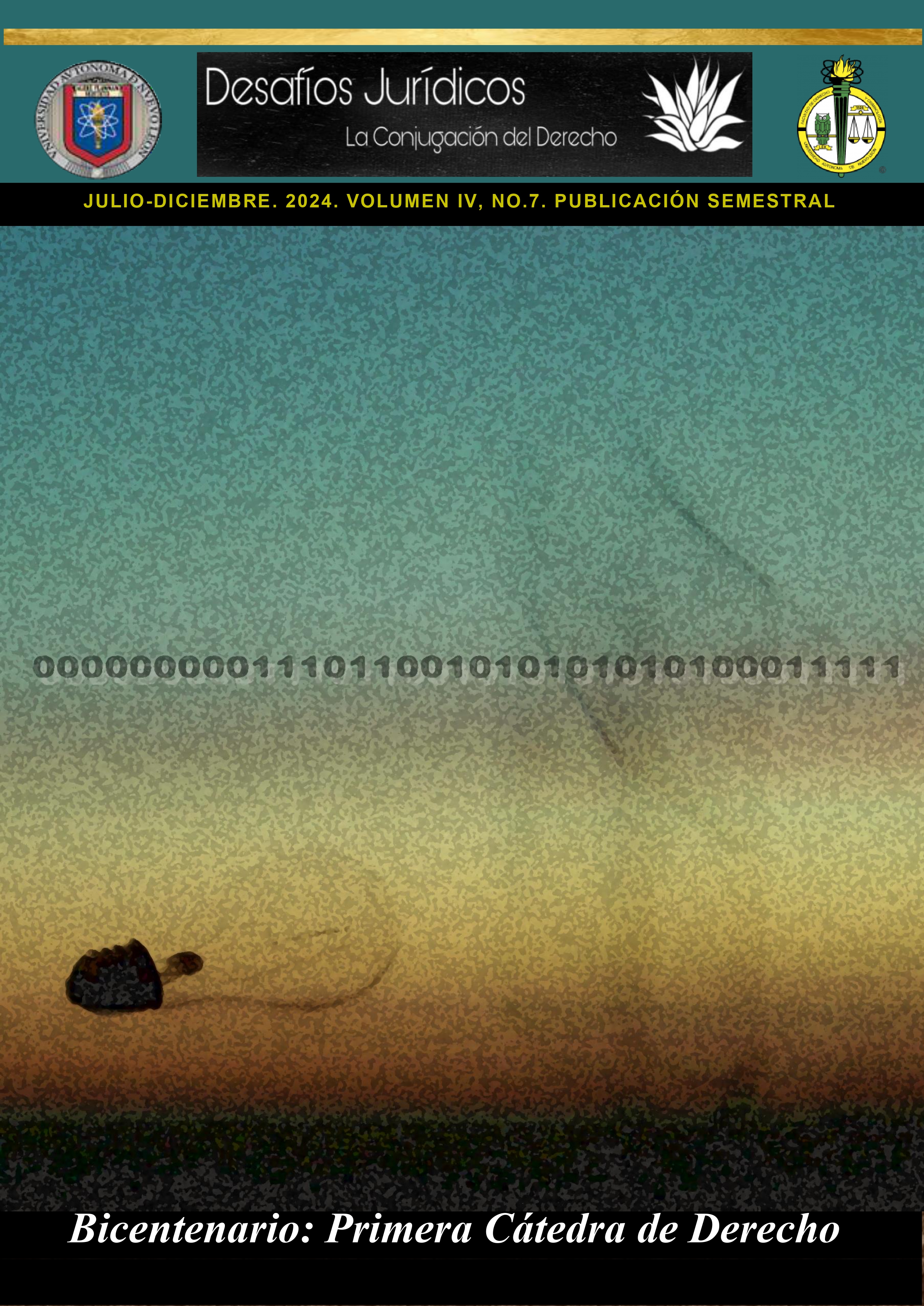Autism and Aggression in an Adolescent
DOI:
https://doi.org/10.29105/dj4.7-146Keywords:
Autism spectrum disorder, Case Study, Emotional regulation, Disability , JusticeAbstract
Autism spectrum disorder is a neurodevelopmental disorder with an increasing number of people diagnosed in childhood, as well as later in life. Despite its incremental growing in understanding, it is required to be considered in various spaces such as the legal one due to the implications of the symptoms themselves in the daily life of those who experience them. The present work explores the implications of ASD in a case study of an adolescent diagnosed with autism who attacks his mother. The data analyzed includes the diagnostic evaluation of the minor and interviews with both parties involved. As a result, a relationship is made between the events, the symptomatology and compromised executive functions. The need for an adequate evaluation of those people who, beyond a normal IQ, present ASD is concluded, given the complications at the level of communication and emotional regulation.
Downloads
References
Autism West Midlands (2019). Meltdown and shutdown in autistic people. https://www.google.com/url?sa=i&rct=j&q=&esrc=s&source=web&cd=&cad=rja&uact=8&ved=0CAIQw7AJahcKEwi4v6e0irWAAxUAAAAAHQAAAAAQAg&url=https%3A%2F%2Fautismwestmidlands.org.uk%2Fwp-content%2Fuploads%2F2019%2F12%2FMeltdown_and_Shutdown_Nov_2019.pdf&psig=AOvVaw3-jLBcZxvvOJtduUdxbX7b&ust=1690759896578949&opi=89978449
Alcivar, C. y Murillo, A. (2022). La justicia en la conformación del estado de derecho ecuatoriano. En La Justicia como principio jurídico y su fundamentación en el derecho ecuatoriano: Universidad Ecotec. https://doi.org/10.21855/librosecotec.79 DOI: https://doi.org/10.21855/librosecotec.79
Bishop-Fitzpatrick, L., Mazefsky, C., Minshew, N. y Eack, S. (2015). The Relationship between Stress and Social Functioning in Adults with Autism Spectrum Disorder and without Intellectual Disability. Autism Research, 8(2), 164-173. doi:10.1002/aur.1433. DOI: https://doi.org/10.1002/aur.1433
Cusack, A. (2020). Beyond special measures: Challenging traditional constructions of competence and cross-examination for vulnerable witnesses in Ireland. Irish Judicial Studies Journal, 3(1), 98–115.
Davis, L. (2009). People with Intellectual Disabilities in the Criminal Justice Systems: Victims & Suspects. https://thearc.org
Erickson, S. L., Salekin, K. L., Johnson, L. N., & Doran, S. C. (2020). The predictive power of intelligence: Miranda abilities of individuals with intellectual disability. Law and Human Behavior, 44(1), 60. DOI: https://doi.org/10.1037/lhb0000356
Fernández Baeza, C. (2013). Adaptación y Análisis Psicométrico de la Escala Gilliam para evaluar Trastorno de Asperger. Summa Psicoloógica UST, 10(2), 5-20. https://doi.org/10.18774/448x.2013.10.136 DOI: https://doi.org/10.18774/448x.2013.10.136
Fitzpatrick, S., Srivorakiat, L., Wink, L., Pedapati, E. y Erickson, C. (2016). Aggression in autism spectrum disorder: presentation and treatment options. Neuropsychiatric Disease and Treatment, 12, 1525-1538. DOI: https://doi.org/10.2147/NDT.S84585
FONPAL (2023). ENI-2 Evaluación Neuropsicológica Infantil 2ed. https://libreriafonpal.com.mx/products/eni-2-evaluacion-neuropsicologica-infantil-2ed-matute
Gaceta Oficial de la Ciudad de México (2021). Ley para la atención, visibilización e inclusión social de las personas con la condición del espectro autista de la ciudad de México. https://www.google.com/url?sa=i&rct=j&q=&esrc=s&source=web&cd=&ved=0CAIQw7AJahcKEwiY4o67iLWAAxUAAAAAHQAAAAAQAg&url=https%3A%2F%2Fwww.congresocdmx.gob.mx%2Fmedia%2Fdocumentos%2Fb07c62f86ee1afe441781ff76922b576c41926ef.pdf&psig=AOvVaw1QPWT3iyi8PMrg9TU_Ye1A&ust=1690759427391254&opi=89978449
Gilliam, James E. (2001). Gilliam Asperger's Disorder Scale: Examiner's Manual (en inglés). Austin: Pro-Ed.
Gupta, A. y State, M. (2006). Autism: genetics. Revista Brasileria de Psiquitria, S29-38 DOI: https://doi.org/10.1590/S1516-44462006000500005
Gutierrez de Piñeres, C. y García-López, E. (2019). Evaluación neuropsicológica forense. En García-López: Psicopatología de la violencia. Aspectos jurídicos y evaluación criminológica. Manual Moderno.
Instituto de la Defensoría Pública (2023). Justicia para adolescentes. http://idp.edomex.gob.mx/justicia_adolescentes
Lansdell, G., Saunders, B. y Eriksson, A. (2021). Neurodisability and the criminal justice system: a problem in search of a solution. https://doi.org/10.4337/9781789907636 DOI: https://doi.org/10.4337/9781789907636
National Institute of Child Health and Human Development (2005). Autism and genes. https://www.autismtruths.org
National Institute on Deafness and Other Communication Disorders (2020). Autism spectrum disorder: Communication problems in children. https://www.nidcd.nih.gov/health/autism-spectrum-disorder-communication-problems-children
National Research Council (2001). Educating children with Autism. https://www.google.com/url?sa=i&rct=j&q=&esrc=s&source=web&cd=&cad=rja&uact=8&ved=0CAIQw7AJahcKEwiAjvSqj7WAAxUAAAAAHQAAAAAQAg&url=https%3A%2F%2Feric.ed.gov%2F%3Fid%3DED461956&psig=AOvVaw0h5Yw2hy2G64R_XloQGmaO&ust=1690761414542388&opi=89978449
Organización Mundial de la Salud (OMS) 2019/2021. Clasificación Internacional de Enfermedades, undécima revisión (CIE-11). En: https://icd.who.int/browse11.
Patton, M. (1987). Qualitative Research and Evaluation Method. Sage, London.
Slavny-Cross, R., Allison, C., Griffiths, S., & Baron-Cohen, S. (2022). Autism and the criminal justice system: An analysis of 93 cases. Autism Research, 1–11. https:// doi.org/10.1002/aur.2690 DOI: https://doi.org/10.1002/aur.2690
Senouci, M., Obeidat, H., and Ghaouti, R. (2021). Autism spectrum as a communication disorder: A case study. African Educational Research Journal, 9(3): 687-695. DOI: https://doi.org/10.30918/AERJ.93.21.104
Therapeutic Pathways (2021). What is the difference between autism and Asperger´s? https://www.tpathways.org/faqs/what-is-the-difference-between-autism-and-aspergers/
Webb, D. (2023). The role of psychology in law enforcement. https://www.all-about-psychology.com/the-role-of-psychology-in-law-enforcement.html
Zaynal, Z. (2007). Case study as a research method. Journal Kenausiaan bi. 9, Junio 2007.
Downloads
Published
How to Cite
Issue
Section
License
Copyright (c) 2024 Minerva Vanegas Farfano

This work is licensed under a Creative Commons Attribution-NonCommercial 4.0 International License.
The authors who publish in this journal accept the following conditions:
- Authors will retain their copyright and guarantee the journal the right of first publication of their work, which will be simultaneously subject to the Creative Commons Attribution-NonCommercial 4.0 International License. That allows third parties to share the work as long as its author and its first publication are indicated in this magazine.
- Authors may make other independent and additional contractual agreements for the non-exclusive distribution of the version of the article published in this journal (eg, include it in an institutional repository or publish it in a book) provided that they clearly indicate that the work it was first published in this magazine.
- Authors are allowed and recommended to publish their work on the Internet (for example on institutional or personal pages) after the review and publication process, as it can lead to productive exchanges and a greater and faster dissemination of the published work ( See The effect of open access).







